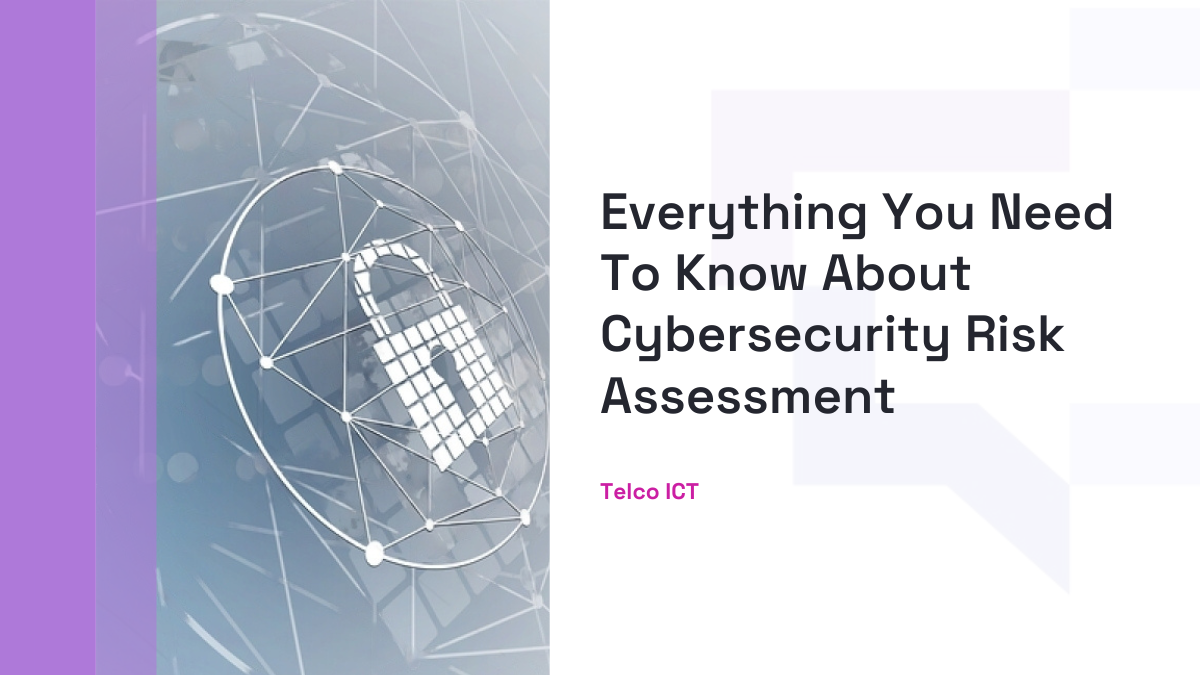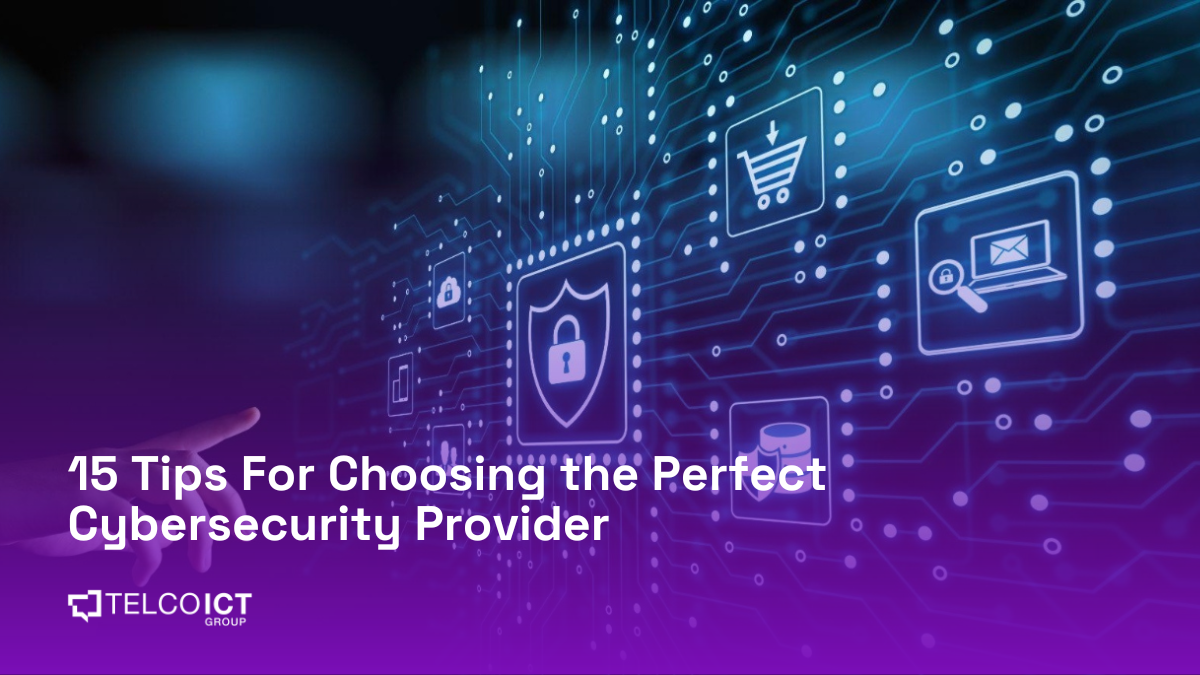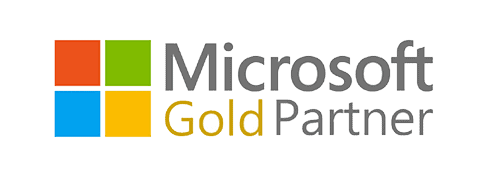All Posts / Everything You Need To Know About Cybersecurity Risk Assessment
Cyber security
Everything You Need To Know About Cybersecurity Risk Assessment

In an era where the digital realm has woven itself seamlessly into the fabric of our lives, the concept of cybersecurity has become a critical safeguard against an invisible adversary.
Now, picture yourself as the vigilant sheriff, armed not with a six-shooter, but with knowledge – knowledge that empowers you to assess, understand, and ultimately fortify your defenses against these digital bandits.
Welcome to the world of cybersecurity risk assessment, where we embark on a journey to uncover the secrets, strategies, and insights necessary to protect what matters most in this digital frontier.
Every day, organizations are vulnerable to a wide range of cybersecurity threats, including ransomware, phishing, malware, insider threats, and many others. Every organization’s cyber security plan should start by undertaking a thorough risk assessment to manage cybersecurity risk efficiently. This is because effective risk assessment enables organizations to build and implement a strong cybersecurity strategy to defend themselves from potential assaults, reduce risky occurrences, and identify risks early.
Regularly carrying out an effective risk assessment is crucial for both daily operations and the long-term preservation of the company’s finances and reputation.
What is Cybersecurity Risk Assessment
In general, risk assessment refers to the examination of all prospective dangers so that you may either do away with them or create and put into place the appropriate security measures to properly manage them when the time comes.
Similar to this, the process of assessing the risks that a company may experience as a result of a cyberattack entails identifying and analyzing those risks. The organization’s internal IT team can handle the procedure, or it can be outsourced to a different vendor. Any organization, no matter how big or small, that depends on IT infrastructure should conduct a cybersecurity risk assessment.
An organization’s capacity to defend its information and information systems against online attacks is assessed through a cybersecurity risk assessment. It identifies, evaluates, and prioritizes cyber hazards to a company’s information and systems. An organization’s cybersecurity risk assessment analyzes, prioritizes, and informs stakeholders about its cybersecurity threats so they may decide how to allocate resources. Threats are prioritized in cybersecurity risk management based on their possible consequences.
Cybersecurity risk management is used by organizations to quickly identify, assess, and deal with the most serious threats.
As a result, dangers can be found, examined, judged, and dealt with by their potential consequences. When you’ve had good cyber security training, you can all accomplish this. Whatever the organization’s strategy, information, and information system risks need to be discovered, evaluated, and prioritized.
Since every organization is subject to different sorts of risk depending on the industry it works in and the data it maintains, a one-size-fits-all method does not work when completing risk assessments. Anyone who performs the risk assessment must therefore have a thorough understanding of the procedure. They won’t suggest effective security solutions if prospective dangers aren’t accurately identified and analyzed.
Components of Cybersecurity Risk Assessment
- Identification of Assets
In this initial phase, organizations conduct an exhaustive inventory of their digital assets. This encompasses not only the obvious hardware and software components but also extends to include intellectual property, sensitive data, and even the physical locations housing these assets. This comprehensive cataloging ensures that no critical element goes unnoticed and provides a foundation for a thorough risk assessment.
- Threat Identification
Threat identification is akin to assembling a rogues’ gallery of potential adversaries. It involves not only recognizing external threats like hackers and malware but also acknowledging the insidious potential of insider threats – employees or collaborators who may misuse their access. Additionally, organizations must be attuned to environmental factors, such as natural disasters or geopolitical events, which can unexpectedly morph into cyber threats.
- Vulnerability Assessment
The vulnerability assessment phase extends beyond a mere checklist of software updates. It delves into the intricate intricacies of an organization’s IT infrastructure. It scrutinizes everything from the physical security of servers to the robustness of firewalls, the resilience of backup systems, and even the human factor – the susceptibility of employees to social engineering tactics. This phase seeks to unearth even the most subtle weaknesses that adversaries might exploit.
- Risk Analysis
Risk analysis injects a sense of urgency into the process. Cybersecurity professionals scrutinize the potential consequences of vulnerabilities being exploited. Financial losses, while significant, are only one facet. Reputational damage, legal ramifications, regulatory fines, and compliance issues are also carefully weighed. This phase helps organizations prioritize risks based on their potential for harm, creating a roadmap for effective mitigation.
- Likelihood Assessment
Here, the focus shifts to probabilities. Cybersecurity experts assess the likelihood of each identified threat exploiting specific vulnerabilities. This step employs data-driven analysis, historical incident data, and threat intelligence to estimate the probability of an event occurring. It’s a critical factor in prioritizing risks, as it enables organizations to allocate resources effectively to address the most probable threats.
- Risk Evaluation
By combining the impact and likelihood assessments, organizations arrive at a holistic understanding of the risk landscape. This holistic view allows for the categorization of risks into high, medium, and low priority, guiding decision-makers in the allocation of resources. It’s at this juncture that organizations determine which risks to tackle first, ensuring a strategic and efficient approach to risk mitigation.
- Risk Mitigation
The risk mitigation phase is where the action takes center stage. Armed with a prioritized list of risks, organizations develop and implement strategies to mitigate or reduce these risks. This can include deploying security controls, creating and enforcing policies and procedures, investing in cutting-edge security technologies, and conducting employee training and awareness programs. The goal is to bolster the organization’s defenses and reduce its vulnerability to cyber threats.
- Monitoring and Review
Cybersecurity risk assessment isn’t a one-and-done affair; it’s an ongoing, dynamic process. Organizations must continually monitor their systems for emerging threats, adapt their strategies, and review their risk assessments regularly. This iterative approach ensures that the organization’s security posture remains effective and up-to-date in the face of ever-evolving cyber threats.
In essence, cybersecurity risk assessment is a meticulously orchestrated dance between understanding an organization’s assets, recognizing potential threats, assessing vulnerabilities, evaluating risks, and actively mitigating them – all while keeping a vigilant eye on the ever-shifting cybersecurity landscape. It’s a complex but essential endeavor in the digital age, where the stakes have never been higher.
A Comprehensive guide on how to Perform a Cybersecurity Risk Assessment.
Performing a cybersecurity risk assessment is a comprehensive and methodical process that involves several key steps. Here’s an in-depth guide on how to conduct a cybersecurity risk assessment:
1. Establish the Scope and Objectives:
Performing a cybersecurity risk assessment begins with a clear definition of its scope and objectives. This foundational step lays the groundwork for the entire assessment process. Here’s a detailed breakdown:
a) Defining Scope
i) Identify Assets: Start by identifying all the digital assets within your organization. These assets encompass a wide range of elements, including but not limited to:
- Hardware: Servers, workstations, routers, switches, mobile devices, and any other equipment that stores or processes data.
- Software: Operating systems, applications, databases, and third-party software.
- Data: Critical and sensitive data, intellectual property, customer information, financial records, and any data repositories.
- Networks: The entire network infrastructure, including firewalls, intrusion detection systems, and switches.
- Physical Locations: Facilities and data centers where your assets are housed.
ii) Categorizing Assets: Once you’ve identified your assets, categorize them based on their criticality and importance to the organization. Not all assets are equal, and some may have a higher risk profile due to their role in your operations or the sensitivity of the data they handle.
iii) Define Boundaries: Clearly outline the boundaries of your assessment. Determine which systems, departments, or processes will be included, and which ones will be excluded. This step ensures that your assessment focuses on the areas most crucial to your organization.
b) Setting Objectives
iv) Objective Clarity: Establish precise and measurable objectives for the assessment.
v) Prioritizing Objectives: Prioritize these objectives based on their importance to the organization’s overall cybersecurity strategy. For instance, compliance-related objectives may be essential for regulatory adherence, while vulnerability assessments are critical for immediate security improvements.
vi) Alignment with Business Goals: Ensure that your objectives align with the broader business goals and risk tolerance of your organization. This alignment helps justify the resources and investments required for the assessment.
2. Assemble a Cross-Functional Team:
Once you have defined the scope and objectives of your cybersecurity risk assessment, the next crucial step is to build a cross-functional team. This team will be responsible for conducting the assessment comprehensively and addressing various facets of cybersecurity risk. Here’s a detailed breakdown of this step:
Team Composition:
- Cybersecurity Experts: Include individuals with expertise in cybersecurity, including information security officers, penetration testers, security analysts, and incident responders. They possess specialized knowledge in identifying and mitigating security threats and vulnerabilities.
- IT Professionals: Engage IT administrators, network engineers, system administrators, and developers who are familiar with the organization’s IT infrastructure. They can provide valuable insights into the technical aspects of vulnerabilities and controls.
- Compliance Officers: Compliance officers or regulatory experts are crucial, especially if your assessment aims to evaluate compliance with specific regulations or industry standards. They ensure that your organization meets legal and regulatory requirements.
- Relevant Stakeholders: Involve representatives from different departments or business units within your organization. These stakeholders can offer unique perspectives on how security risks may impact their areas and provide insights into business-critical assets.
3. Identify and Categorize Assets:
Identifying and categorizing assets is a fundamental step in a cybersecurity risk assessment. This process involves creating a comprehensive inventory of all digital assets within the organization and categorizing them based on their criticality and importance. Here’s a detailed guide on how to perform this step effectively:
Create a Comprehensive Inventory:
- Hardware Assets: Start by listing all physical hardware assets, including servers, workstations, laptops, networking equipment (routers, switches), mobile devices, and any other hardware that is part of your IT infrastructure.
- Software Assets: Document all software assets, including operating systems, applications, databases, content management systems (CMS), and any third-party software used in your organization.
- Data Assets: Identify and classify critical data assets. This includes customer data, financial records, intellectual property, sensitive documents, and any other data repositories.
- Intellectual Property: Recognize any intellectual property, patents, proprietary software, or unique technologies that the organization owns or relies upon.
- Network Infrastructure: Document your network infrastructure, including the configuration of firewalls, intrusion detection systems (IDS), switches, and any remote access solutions.
- Physical Locations: Make a list of all facilities, data centers, and other physical locations where your assets are housed.
4. Identify Potential Threats:
Identifying potential threats is a critical step in a cybersecurity risk assessment. By understanding the various threats that could target your organization, you can better assess vulnerabilities and prioritize security measures. Here’s an in-depth guide on how to identify and categorize potential threats:
External Threats:
- Hackers
- Malware.
- State-Sponsored Actors
- Cybercriminals
Insider Threats:
- Employees
- Contractors and Partners
Environmental Threats:
- Natural Disasters
- Power Outages
- Physical Incidents
5. Assess Risk Impact:
Once vulnerabilities have been identified, the next critical step in a cybersecurity risk assessment is to assess the potential impact of each vulnerability being exploited. This assessment helps organizations understand the severity and consequences of security risks. Here’s an in-depth guide on how to assess the impact of vulnerabilities:
Financial Impact:
- Loss of Revenue
- Data Recovery Costs
- Legal Fees
Reputational Damage:
- Loss of Trust
- Customer Confidence
Legal and Regulatory Consequences:
- Non-Compliance Fines
- Legal Actions
Operational Disruptions:
- Downtime
- Productivity Losses
7. Assess Risk Likelihood:
Assessing the likelihood of threats exploiting specific vulnerabilities is a crucial aspect of a cybersecurity risk assessment. This step involves estimating the probability of each threat materializing based on historical data, threat intelligence, and expert judgment. Here’s an in-depth guide on how to assess risk likelihood and create a risk matrix:
Estimate Likelihood:
- Historical Data
- Threat Intelligence
- Expert Judgment
Likelihood Assessment:
Use a standardized scale (e.g., low, medium, high) or a numerical scale (e.g., 1 to 5) to assign likelihood ratings to each threat-vulnerability pair. The likelihood scale should reflect the probability of the threat exploiting the vulnerability.
Consider factors that influence likelihood, such as the existence of known exploits, the motivation and capabilities of potential threat actors, and the effectiveness of existing security controls. Common risk categories may include:
- High likelihood, high impact (e.g., top-priority risks).
- High likelihood, medium impact.
- High likelihood, low impact.
- Medium likelihood, high impact.
- Medium likelihood, medium impact.
- Medium likelihood, low impact.
- Low likelihood, high impact.
- Low likelihood, medium impact.
- Low likelihood, low impact (e.g., lower-priority risks).
8. Calculate Risk Levels:
Calculating risk levels by combining the impact and likelihood assessments is a critical step in a cybersecurity risk assessment. This process provides a holistic view of the organization’s risk landscape and helps prioritize risks effectively. Here’s a detailed guide on how to calculate risk levels:
Impact and Likelihood Scales:
- Ensure that both impact and likelihood assessments use standardized scales, such as low, medium, high, or numerical scales like 1 to 5. These scales should have been established during the previous steps of the risk assessment.
Establish a Risk Matrix:
- Create a risk matrix that combines the impact and likelihood assessments. The matrix typically has rows representing likelihood (e.g., low, medium, high) and columns representing impact (e.g., low, medium, high).
Assign Risk Ratings:
- Locate each risk in the risk matrix by finding the intersection of its impact and likelihood ratings. This intersection determines the risk’s overall rating.
For example, if a risk has a high impact rating and a medium likelihood rating, it would fall into the corresponding cell in the matrix.
Risk Rating Categories:
Develop risk rating categories based on the risk matrix. Common categories include:
- High Risk
- Medium Risk
- Low Risk
9. Risk Mitigation Strategies:
Developing effective risk mitigation strategies is a crucial aspect of cybersecurity risk assessment and management. Once high-priority risks have been identified and their impact assessed, organizations must take proactive measures to reduce or eliminate these risks. Here’s an in-depth guide on how to develop risk mitigation strategies:
Identify High-Priority Risks:
- Begin by reviewing the risk assessment results and identifying risks that fall into the high-risk category based on their risk levels or scores.
Risk Mitigation Planning:
- For each high-priority risk, create a specific risk mitigation plan that outlines the strategies and actions required to reduce or manage the risk effectively.
Implement Security Controls and Best Practices:
- Identify and implement security controls, practices, and measures that address the vulnerabilities associated with high-priority risks. These can include:
- Access Controls
- Patch Management
- Firewalls and Intrusion Detection Systems (IDS)
- Data Encryption
- Multi-Factor Authentication (MFA)
- Security Awareness Training
Develop and Enforce Security Policies and Procedures:
- Create comprehensive security policies and procedures that outline how security controls and best practices will be implemented and enforced within the organization. These policies should cover areas such as data handling, incident response, and acceptable use of technology resources.
- Ensure that security policies are communicated to all employees and that there are mechanisms in place for enforcing compliance.
Invest in Cybersecurity Technologies:
Identify and invest in cybersecurity technologies and tools that can enhance your organization’s security posture. Examples include:
- Antivirus and Anti-malware Solutions
- Intrusion Prevention Systems (IPS)
- Security Information and Event Management (SIEM) SystemsData Loss Prevention (DLP) Solutions
10. Implement and Monitor Controls:
Once risk mitigation strategies have been developed, the next critical steps involve putting those strategies into action, implementing security controls, and establishing ongoing monitoring and assessment processes. Here’s a detailed guide on how to implement and monitor controls effectively:
Implementation of Mitigation Strategies:
- Assigned Responsibilities
- Timelines and Milestones
- Resource Allocation
- Testing and Validation
Continuous Monitoring:
- Security Information and Event Management (SIEM)
- Security Incident Response
- Vulnerability Scanning
- Log Analysis
Assessment of Control Effectiveness:
- Key Performance Indicators (KPIs)
- Periodic Security Audits
- User Training and Awareness
Control Updates and Adaptation:
- Incident Response Improvement
- Threat Intelligence Integration
- Patch Management
- Security Policy Review
11. Document and Report:
Documenting and reporting are critical aspects of the cybersecurity risk assessment process. Comprehensive documentation and reporting ensure transparency, accountability, and compliance with regulatory requirements. Here’s a detailed guide on how to document and report effectively:
Comprehensive Documentation:
- Risk Assessment Findings: Maintain detailed records of the entire risk assessment process, including the identification of assets, threats, vulnerabilities, risk assessments, and mitigation strategies. Document the results of impact and likelihood assessments, risk levels, and risk scores for each identified risk.
- Risk Mitigation Plans: Document the specific risk mitigation strategies developed for high-priority risks. Include information on responsibilities, timelines, resource allocation, and testing/validation activities related to the implementation of security controls.
- Control Implementation: Record the details of control implementation, including the deployment of security technologies, updates to policies and procedures, and any changes made to address identified vulnerabilities.
- Monitoring and Assessment: Keep records of ongoing monitoring activities, including logs, incident response actions, vulnerability scans, and security audits. Note any improvements or updates made to controls based on monitoring results.
- Incident Reports: Maintain records of security incidents, including incident reports, incident response plans, and post-incident analysis. Document the actions taken to mitigate incidents and prevent their recurrence.
Generate Detailed Reports:
- Stakeholder Reports: Create detailed reports summarizing the results of the risk assessment process for different stakeholder groups. Tailor the content and level of detail to the needs of each audience.
- Senior Management Reports: Prepare reports that provide an executive summary of the risk assessment findings, highlighting high-priority risks, mitigation strategies, and their potential impact on the organization. Use non-technical language to ensure accessibility for senior management.
- Regulatory Compliance Reports: If your organization is subject to regulatory requirements (e.g., GDPR, HIPAA), generate reports that demonstrate compliance with cybersecurity regulations. Include information on control implementation, incident response capabilities, and any required breach notifications.
- Board of Directors Reports: For organizations with a board of directors, provide comprehensive reports that offer an overview of the organization’s cybersecurity risk posture. Highlight key risks and control effectiveness. Discuss the alignment of cybersecurity initiatives with business objectives.
- External Stakeholder Reports: If your organization shares cybersecurity information with external stakeholders, such as business partners or clients, generate reports that demonstrate your commitment to security and risk management. Highlight your security measures, compliance efforts, and incident response capabilities.
Report Frequency:
- Determine the frequency of reporting based on the organization’s needs and regulatory requirements. Regularly scheduled reports may be monthly, quarterly, or annually, while incident-specific reports should be generated as needed.
Compliance Documentation:
- Ensure that documentation and reporting align with any compliance requirements specific to your industry or region. Be prepared to provide evidence of compliance during audits or regulatory inspections.
Record Keeping:
- Maintain a secure and organized record-keeping system for all cybersecurity documentation. Store records in a manner that ensures their integrity and confidentiality.
Accessibility and Distribution:
- Ensure that reports are accessible to authorized individuals within the organization while maintaining strict access controls to protect sensitive information. Distribute reports to stakeholders through secure channels.
Report Updates:
- Regularly update reports to reflect changes in the organization’s risk landscape, control effectiveness, and incident response capabilities. Keep reports current to provide an accurate representation of the organization’s cybersecurity posture.
Comprehensive documentation and reporting are essential for demonstrating due diligence in cybersecurity risk management. They provide a record of actions taken to protect the organization, support informed decision-making, and facilitate communication with stakeholders. Additionally, they serve as valuable references for future risk assessments and incident response efforts.
12. Review and Update:
Regularly reviewing and updating the cybersecurity risk assessment process is vital to maintaining the relevance and effectiveness of your organization’s security measures. The threat landscape and technology evolve, making it crucial to adapt to new challenges and vulnerabilities. Here’s a detailed guide on how to review and update the risk assessment process:
Establish a Review Schedule:
- Determine a regular review schedule for the entire risk assessment process. The frequency of reviews can vary depending on the organization’s size, industry, and risk profile. Common review intervals include annually, semi-annually, or quarterly.
Evaluate Changing Factors:
Assess how changes in technology, threats, and the organization’s risk landscape may impact the risk assessment process. Consider factors such as:
- Emerging Threats: Stay informed about new cybersecurity threats, attack techniques, and vulnerabilities relevant to your industry and organization.
- Technology Advances: Evaluate how changes in technology, including the adoption of new software, hardware, or cloud services, affect your risk profile.
- Regulatory Changes: Monitor updates to cybersecurity regulations and compliance requirements that may necessitate adjustments to risk assessments.
- Business Changes: Consider how changes in the organization’s structure, operations, or business objectives may impact cybersecurity risks.
Conduct Periodic Reassessments:
- Periodically conduct full reassessments of your organization’s cybersecurity risks. Reassessments involve revisiting the entire risk assessment process, including the identification of assets, threats, vulnerabilities, and mitigation strategies.
- Update the risk assessment documentation with any new findings, control implementations, or changes in risk levels.
Incorporate Lessons Learned:
- Integrate lessons learned from security incidents and data breaches into the risk assessment process. Analyze how incidents occurred, what vulnerabilities were exploited, and what controls were effective or lacking.
- Use incident data to inform risk assessments and prioritize mitigation efforts. Adjust controls and strategies based on real-world incidents.
Adapt Mitigation Strategies:
- Review and adapt risk mitigation strategies based on the findings of reassessments. If new risks have emerged or existing risks have changed in severity, update mitigation plans accordingly.
Update Documentation and Reporting:
- Ensure that all updated information, findings, and mitigation strategies are reflected in documentation and reporting. This includes revising risk assessment reports, incident response plans, and control implementation records.
Training and Awareness:
- Provide ongoing training and awareness programs for employees to keep them informed about evolving threats and best practices. Ensure that employees understand their role in mitigating risks.
Stakeholder Communication:
- Communicate the results of risk reassessments and updates to relevant stakeholders, including senior management, the board of directors, and IT teams. Keep stakeholders informed about the evolving risk landscape and the organization’s cybersecurity efforts.
Continuous Improvement:
- Embrace a culture of continuous improvement in cybersecurity risk management.
- Encourage feedback from stakeholders and employees to identify areas for enhancement in the risk assessment process.
Collaboration:
- Promote collaboration between IT teams, security personnel, and other departments to ensure that risk assessments are aligned with business goals and operations.
- Regularly reviewing and updating the risk assessment process helps organizations stay ahead of emerging threats and vulnerabilities, adapt to changing technology, and maintain a proactive and effective cybersecurity posture. It ensures that risk assessments remain relevant and actionable, enhancing overall security resilience.
13. Continuous Improvement:
Encouraging a culture of continuous improvement in cybersecurity is essential for staying resilient in the face of evolving threats. By learning from security incidents, breaches, and near misses, organizations can refine and enhance the cybersecurity risk assessment process over time. Here’s a detailed guide on fostering continuous improvement:
Incident and Breach Analysis:
Conduct thorough post-incident or post-breach analyses to understand the root causes, vulnerabilities, and weaknesses that allowed the incident to occur. Gather data on the attack vectors, tactics, techniques, and procedures used by threat actors.
Lessons Learned:
- Extract valuable lessons from incident and breach analyses. Identify specific areas where security controls, policies, or procedures could have been improved to prevent or mitigate the incident more effectively.
Incident Response Debriefs:
- After an incident, gather key stakeholders involved in the incident response process for debriefing sessions. Discuss what went well, what could have been done differently, and what improvements can be made to the incident response plan.
Root Cause Analysis:
- Perform root cause analysis to identify the underlying causes of incidents and breaches. This involves a deeper examination of the factors that contributed to the security event, including technical, human, and process-related factors.
Identify Gaps and Weaknesses:
- Based on incident and breach analyses, identify gaps and weaknesses in your organization’s security posture. Determine whether vulnerabilities were known but not addressed, if controls were ineffective, or if there were lapses in monitoring and detection.
Continuous Feedback Loop:
- Establish a continuous feedback loop between incident response teams, security personnel, and IT teams. Encourage open and candid discussions about incident findings and recommendations for improvement.
Refine Risk Assessment Process:
- Use lessons learned from incidents to refine and enhance the cybersecurity risk assessment process. Consider how vulnerabilities were exploited, what controls failed, and how risk assessments could have better identified and prioritized these risks.
Adjust Mitigation Strategies:
- Update risk mitigation strategies and action plans based on incident findings. Ensure that controls are adapted to address the specific vulnerabilities and threats highlighted by recent incidents.
Employee Training and Awareness:
- Incorporate incident lessons into employee training and awareness programs. Teach employees about the latest threats and tactics used by cybercriminals and guide how to recognize and respond to them.
Continuous Monitoring:
- Integrate lessons learned into ongoing monitoring activities. Adjust monitoring tools and processes to better detect similar threats in the future.
Documentation and Reporting:
- Document the lessons learned from incidents, including recommended improvements and action items. Use this documentation to inform risk assessments and report to senior management and stakeholders.
Cultural Embrace:
- Foster a culture where employees and teams are encouraged to report near misses, security concerns, and potential vulnerabilities without fear of retribution. Create a “lessons learned” mentality across the organization.
Continuous Training:
- Provide continuous training and professional development opportunities for cybersecurity personnel to stay updated on the latest threats, vulnerabilities, and best practices.
Collaborative Efforts:
- Encourage collaboration between IT, security, and business units to ensure that improvements are aligned with business goals and that security enhancements do not hinder operations.
- By embracing continuous improvement and learning from incidents and near misses, organizations can strengthen their cybersecurity defenses and enhance their ability to identify, assess, and mitigate risks effectively. This proactive approach helps organizations adapt to the ever-changing threat landscape and maintain a resilient cybersecurity posture.
Conclusion
Cybersecurity risk assessment is the foundation of effective digital defense. It involves identifying assets, evaluating threats, and assessing vulnerabilities to prioritize security efforts. This ongoing process demands dedicated teams, tailored controls, and continuous monitoring. Documentation and reporting ensure accountability and compliance.
Yet, the true strength lies in a culture of continuous improvement. Learning from incidents and near misses, organizations refine their risk assessment process, bolster controls, and adapt to emerging threats. In today’s digital age, cybersecurity risk assessment is not a choice but a strategic necessity, guiding organizations through the evolving landscape of cyber risks and resilience.
Table of contents
Related Posts
We’ll handle the tech
so you can get on with
running your business.

CALL US
1300 414 214
Our Trusted Partners
Contact Us
Let’s Talk
Common Questions
Do you outsource your work overseas?
No. We use local teams only. That way we can respond more quickly to any problems that may occur. We want your tech running smoothly so you can focus on what you do best.
Is your support 24 hours?
Yes. We have people available whenever you need us. We understand that your tech runs 24 hours, and you need it be working at all times.
Are your services customised for my business?
Yes. There is great off the shelf software. But we know one size never fits all. So anything we set up for you is designed to make your business run smoother and in the way you want it to.
Are your services expensive?
No. Reliable tech is the life blood of your business. We keep it running smoothly so your business can keep making money. All our services are fixed fees, so you never get any nasty surprises.
What’s the next step?
Simply book a chat with one of our experts. We’ll have a chat about exactly what you need and how we can help. If you like our approach then we’ll give you a fixed price quote and get everything up and running for you, fast!








